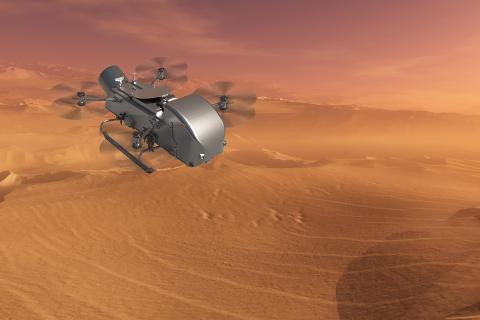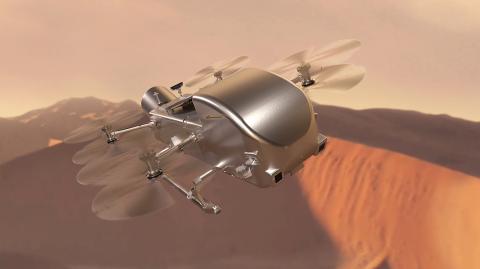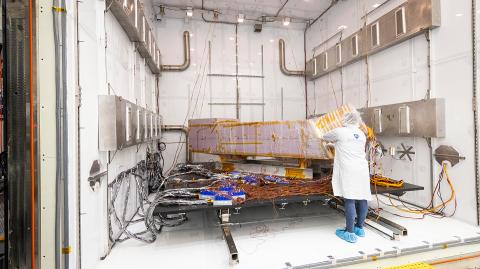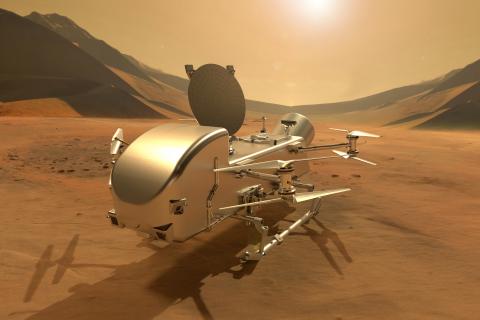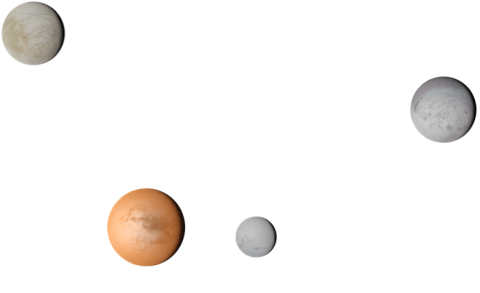Spacecraft and Instruments
APL will design, build and operate the Dragonfly rotorcraft-lander. With eight rotors, Dragonfly will take advantage of Titan’s dense atmosphere and low gravity to fly between locations -- traveling up to 110 miles (175 kilometers), farther than any planetary surface mission.
Dragonfly will be equipped with a sampling system that uses drills to collect and feed surface materials to a mass spectrometer, which will identify their chemical compositions, especially those relevant to biological processes. A gamma-ray and neutron spectrometer will be able to remotely detect chemical elements in the subsurface immediately beneath the lander. Dragonfly will also carry a suite of meteorological sensors to measure atmospheric temperature, pressure, humidity and wind speed; a seismometer to detect potential “Titan-quakes;” and a set of cameras that will capture sweeping panoramic views surrounding each landing site, microscopic images at sand-grain scale and aerial images as Dragonfly flies from place to place.
Mission Facts
Launch
No earlier than 2028
Titan Arrival
Mid-2030s
Principal Investigator
Elizabeth (Zibi) Turtle, Johns Hopkins APL
Project Manager
Rick Fitzgerald, Johns Hopkins APL
Project Scientist
Scott Murchie, Johns Hopkins APL



